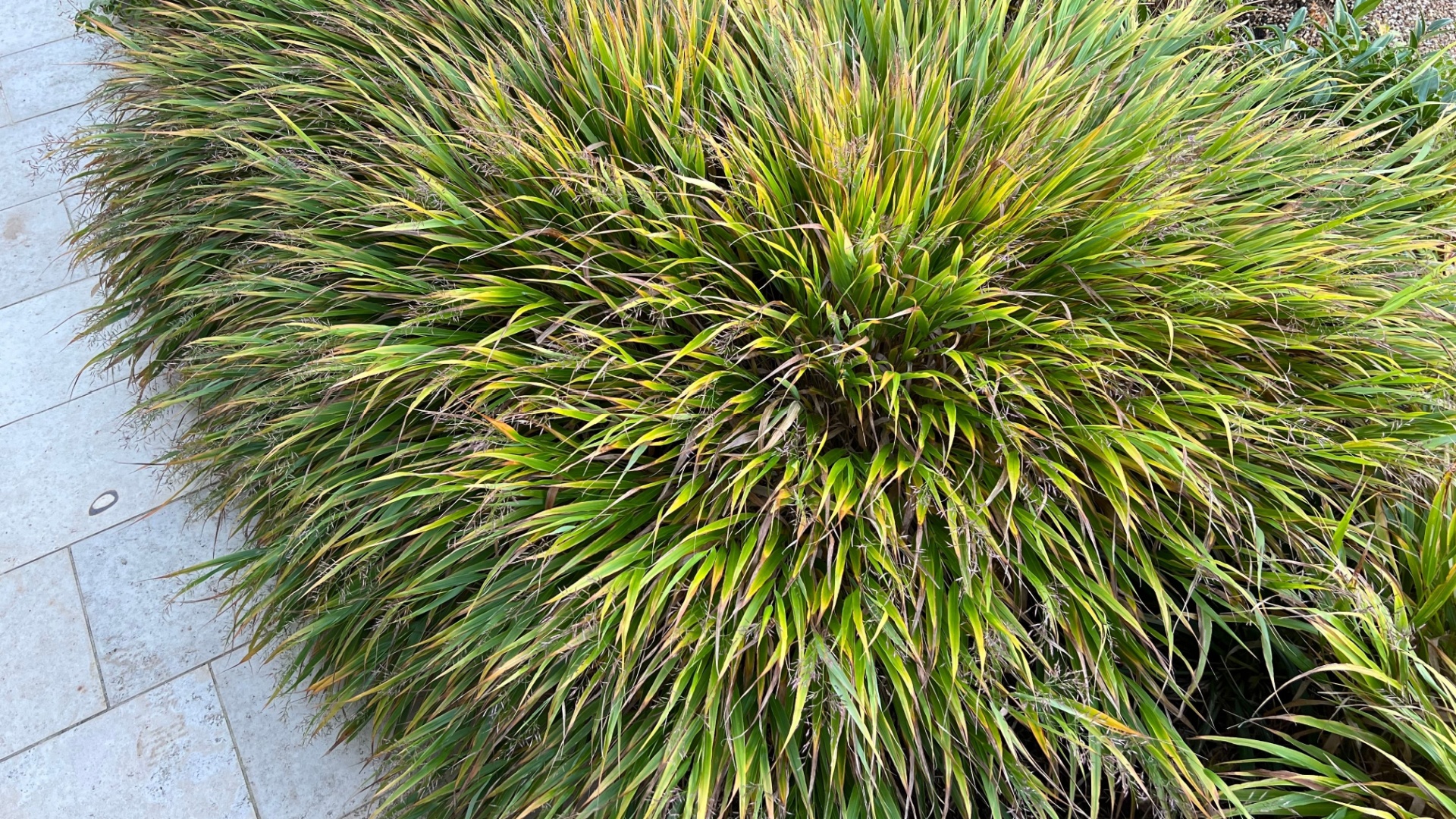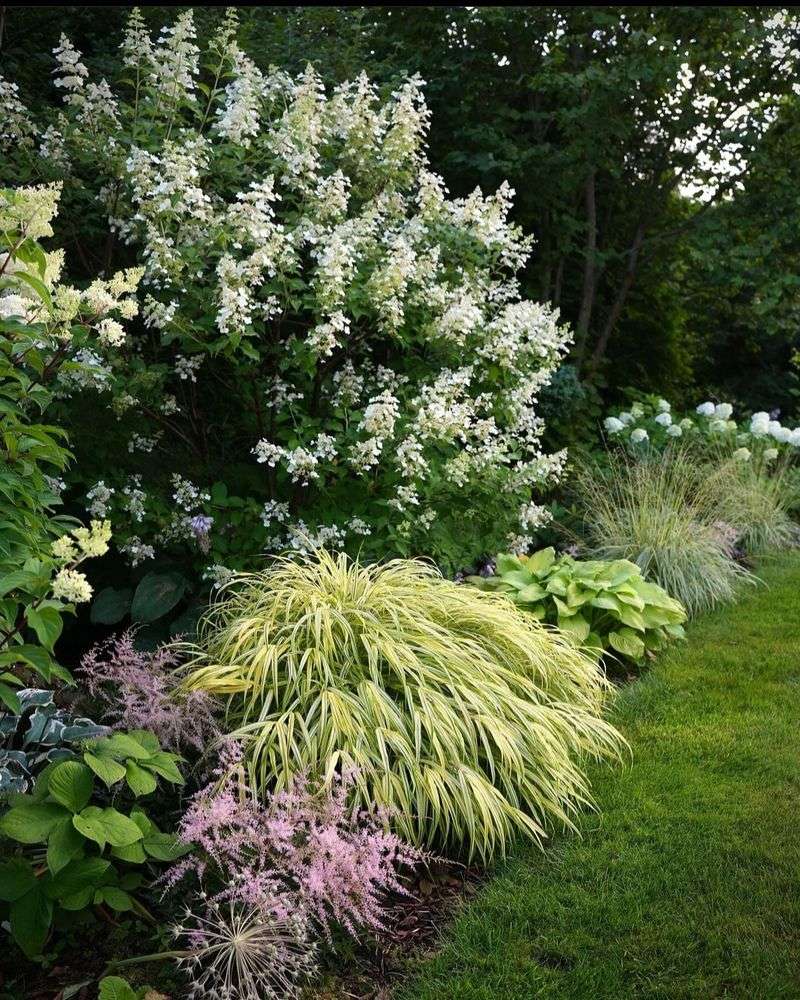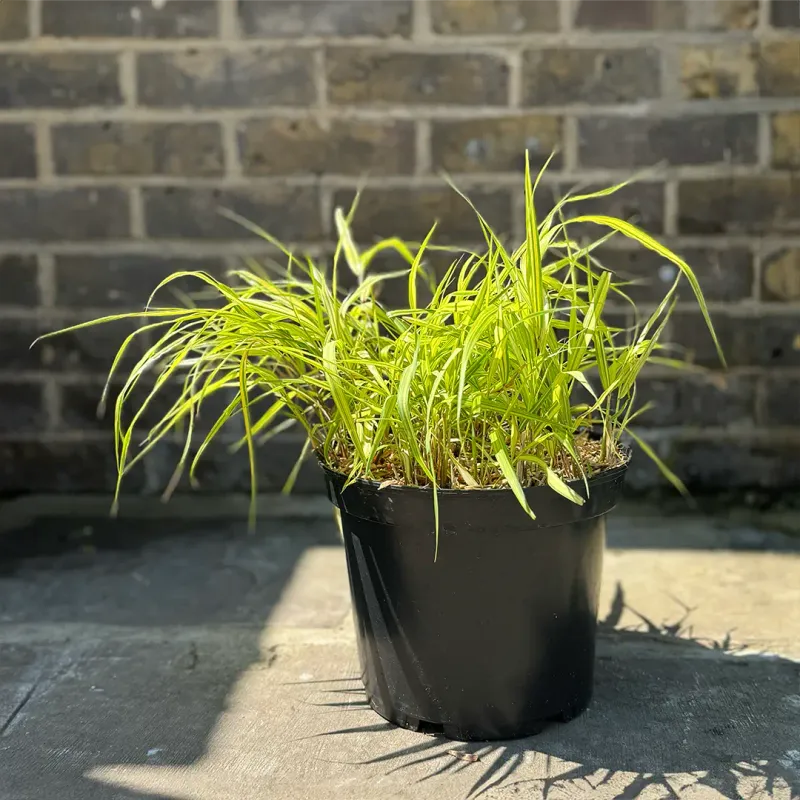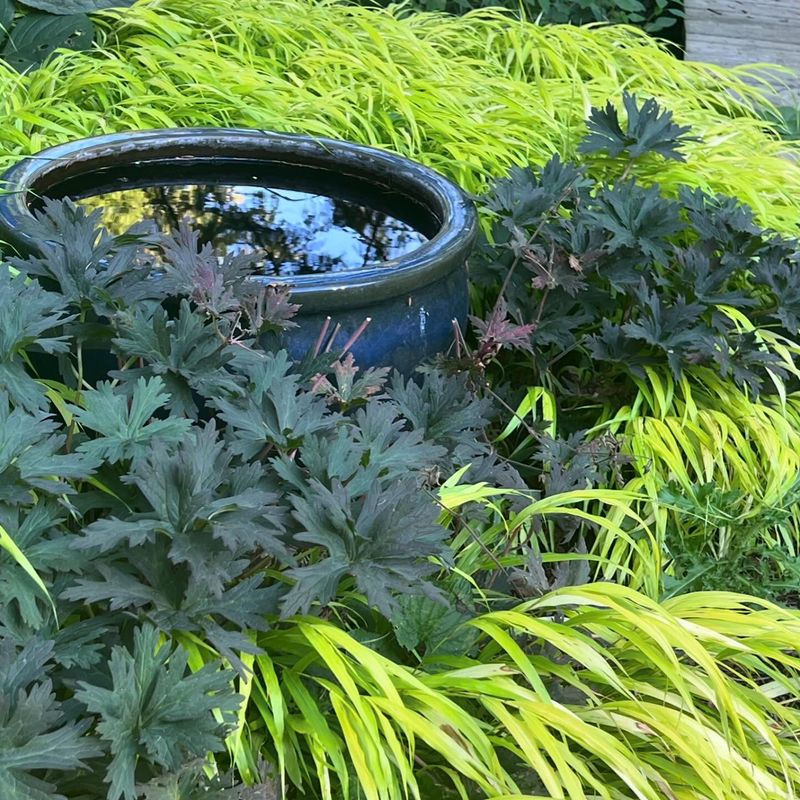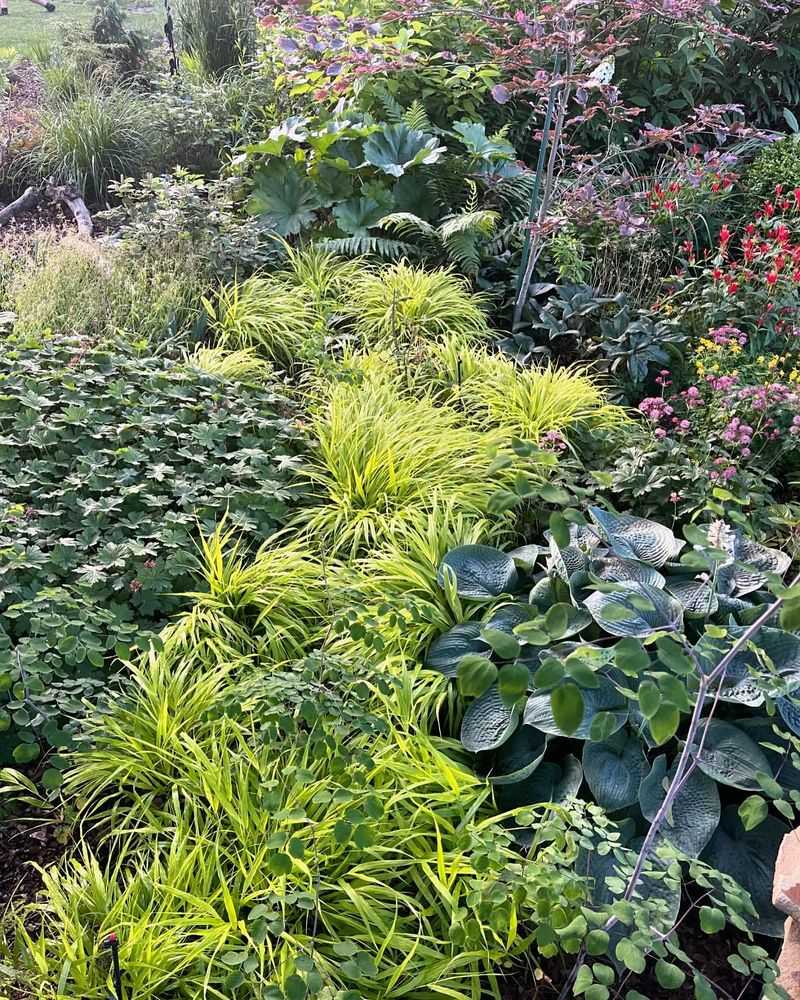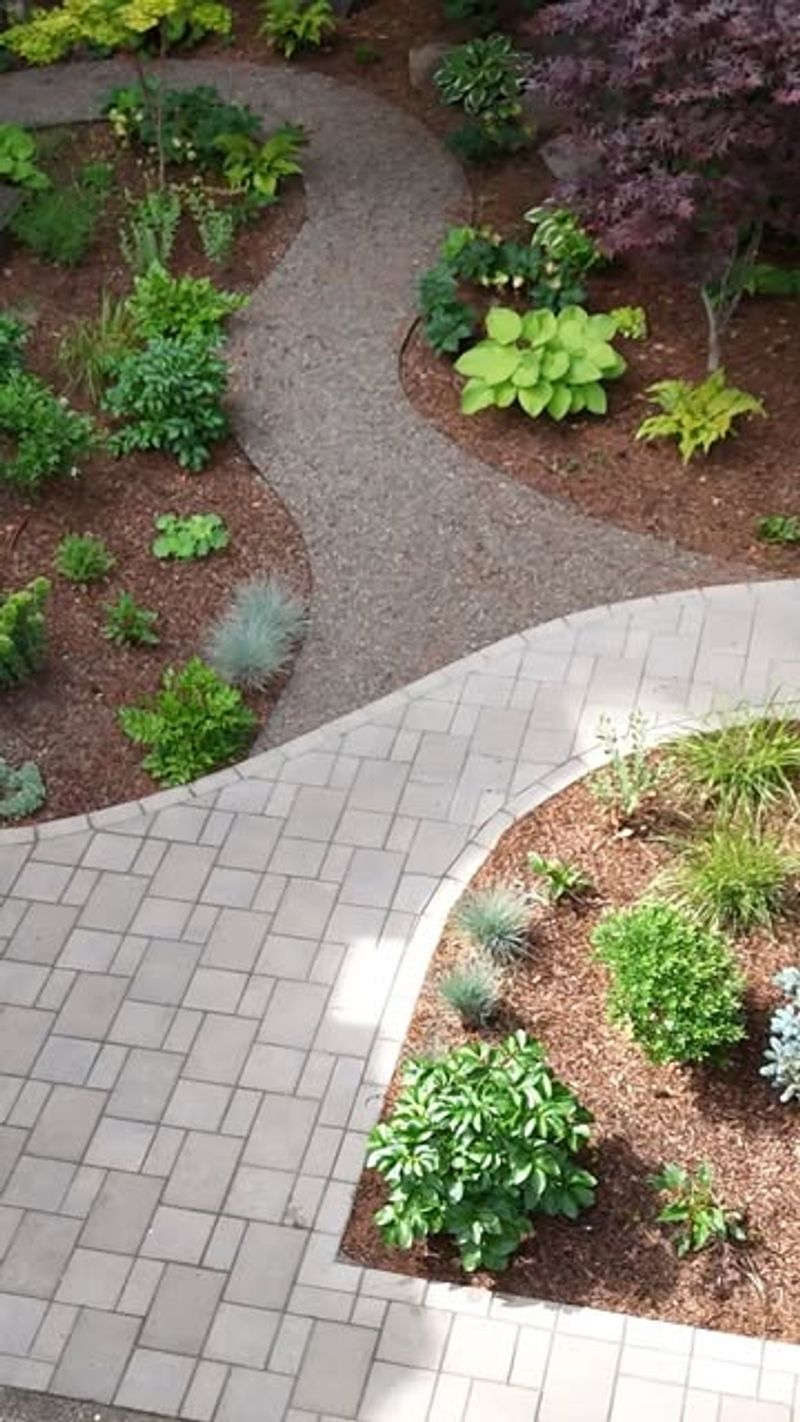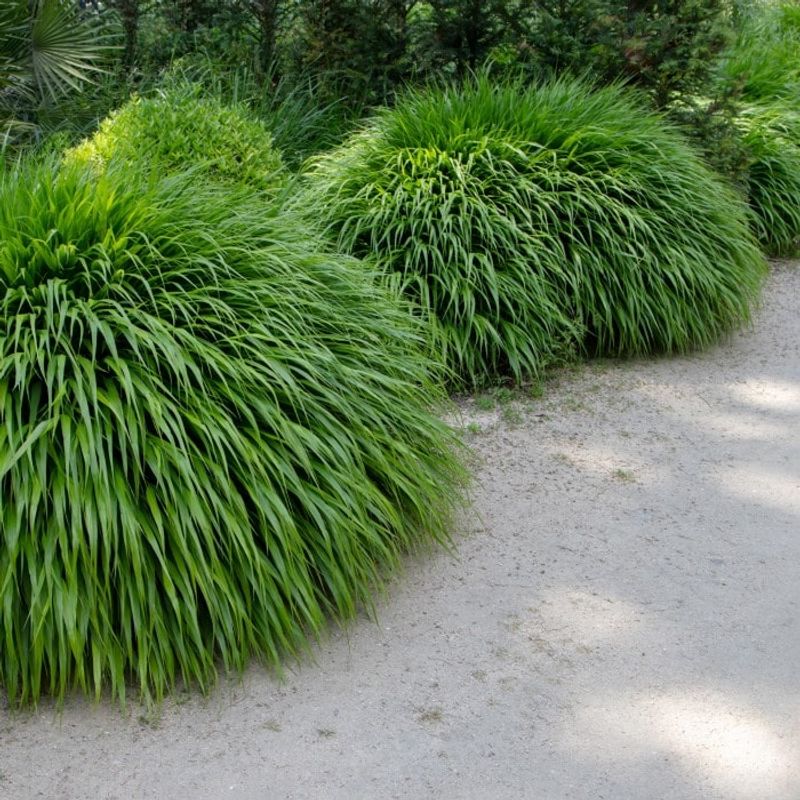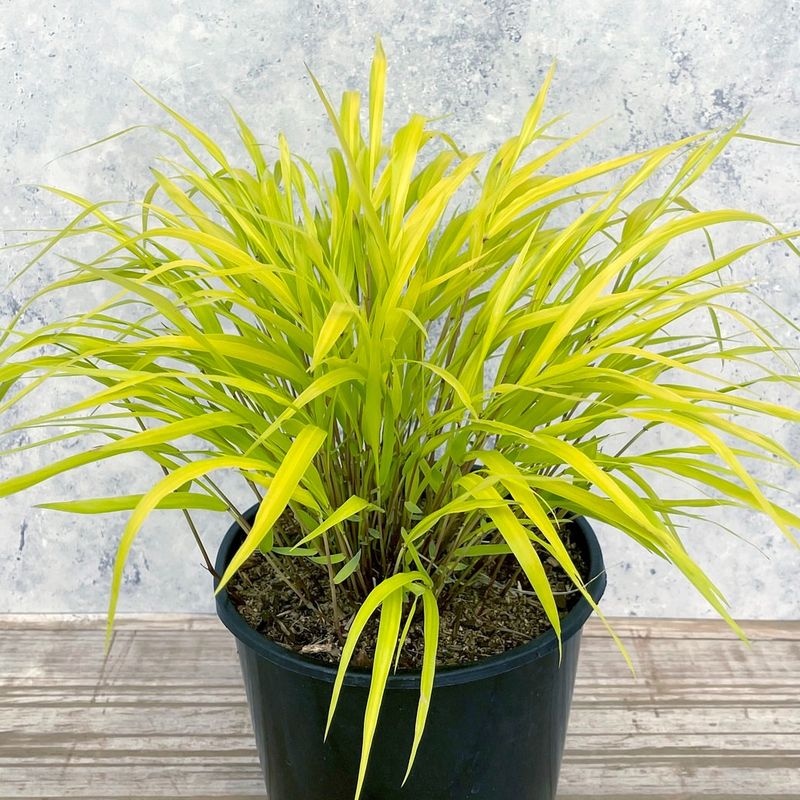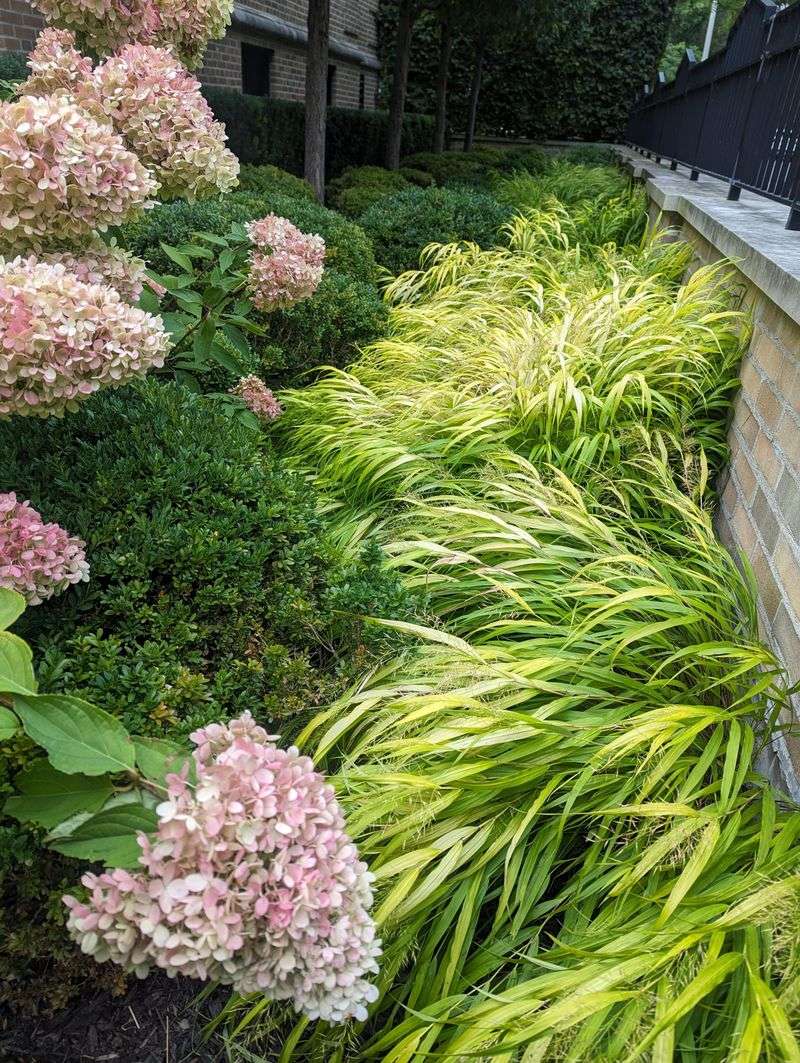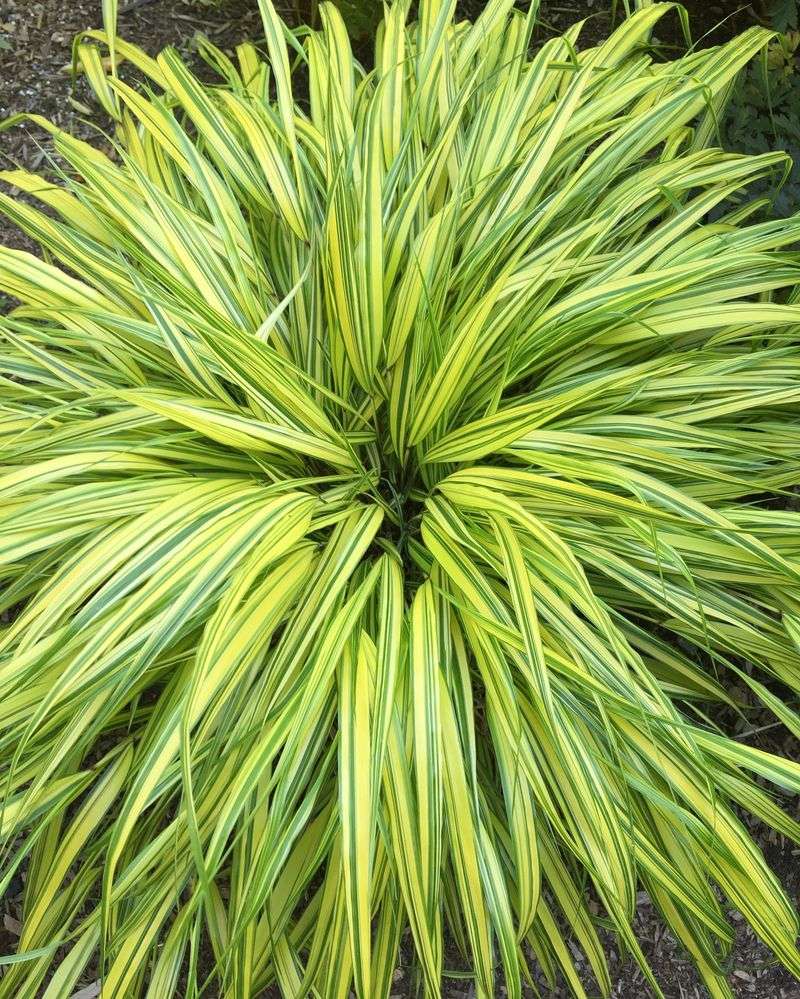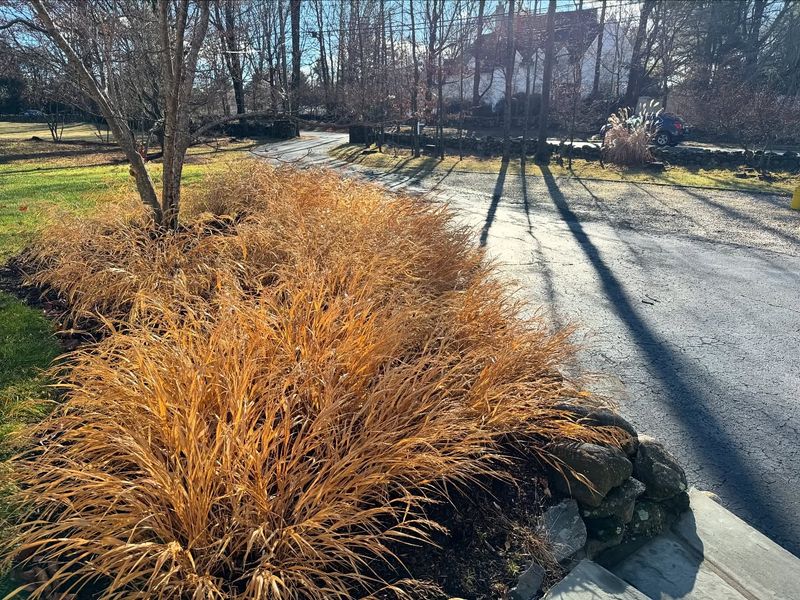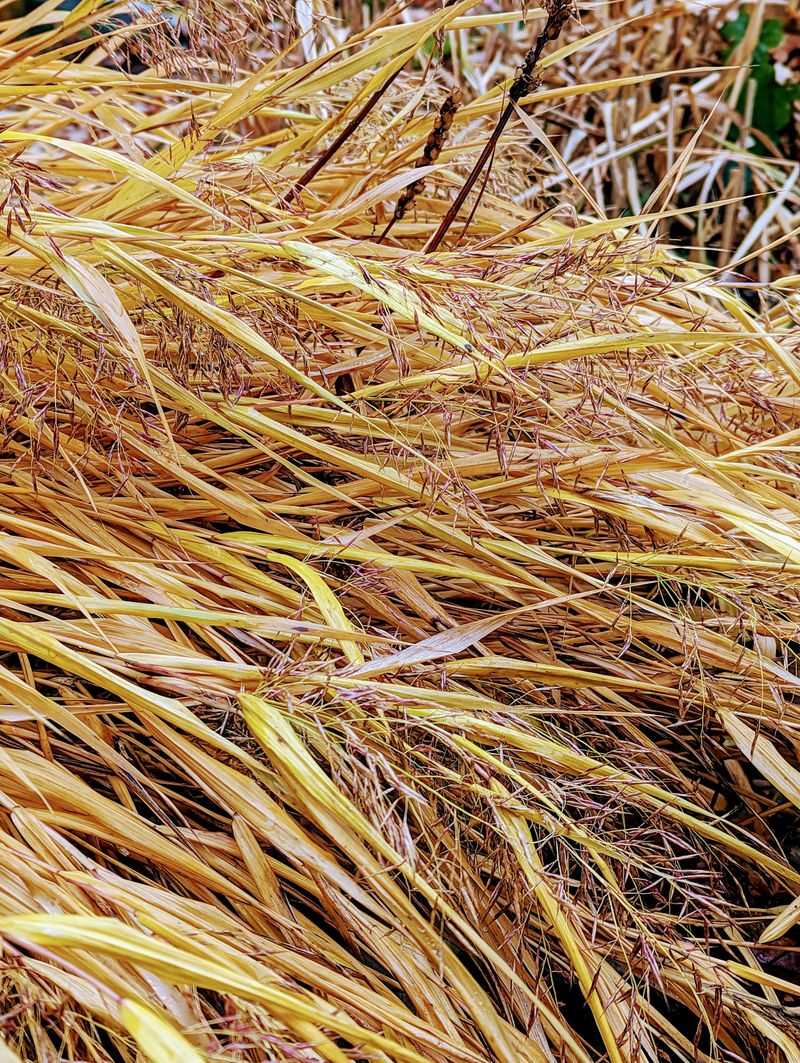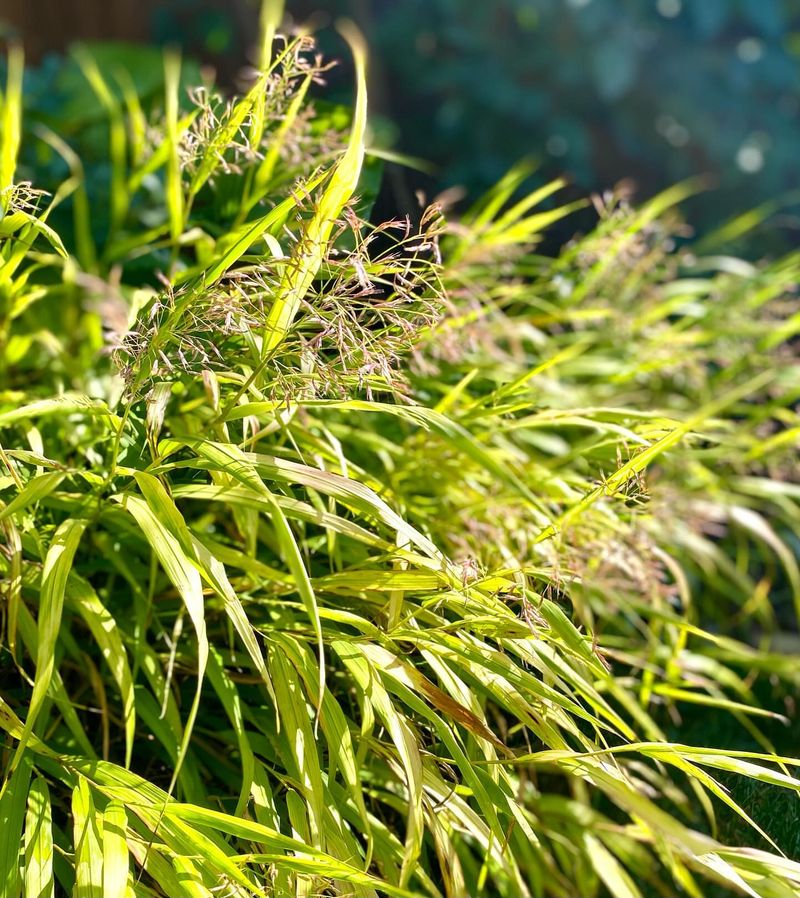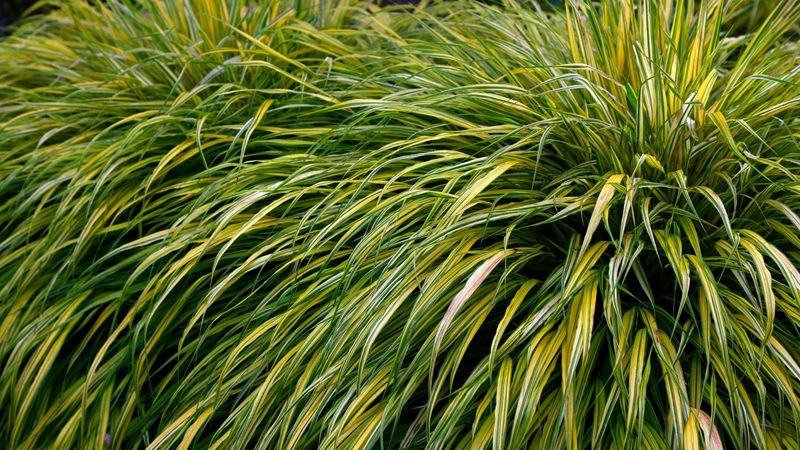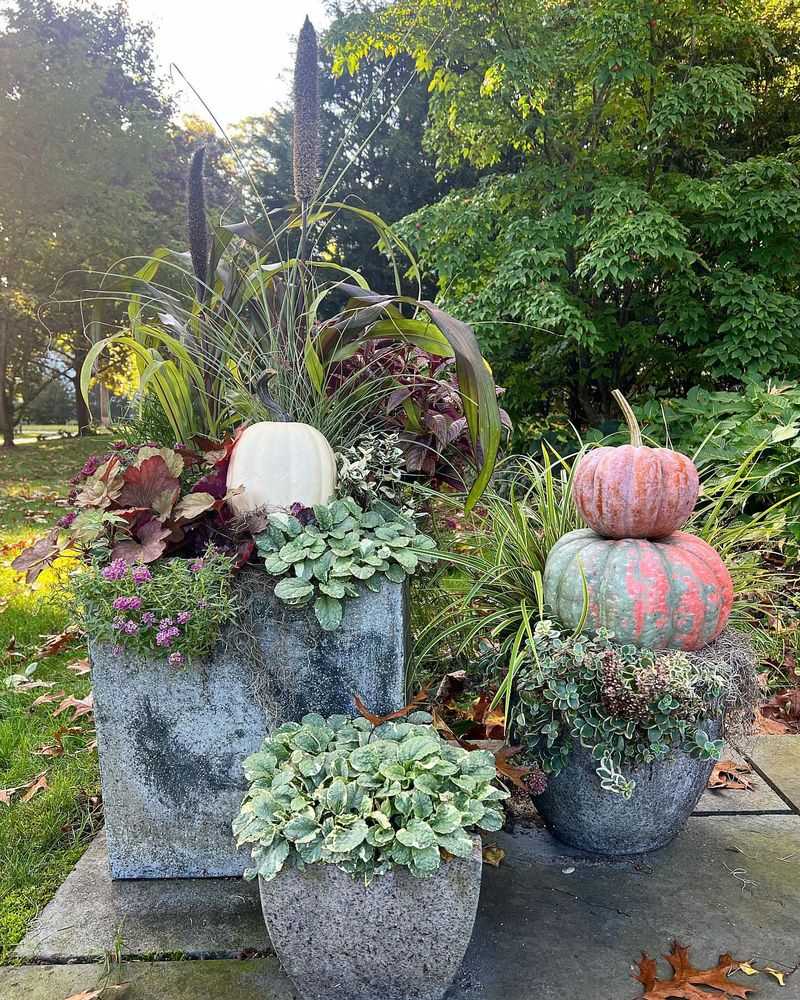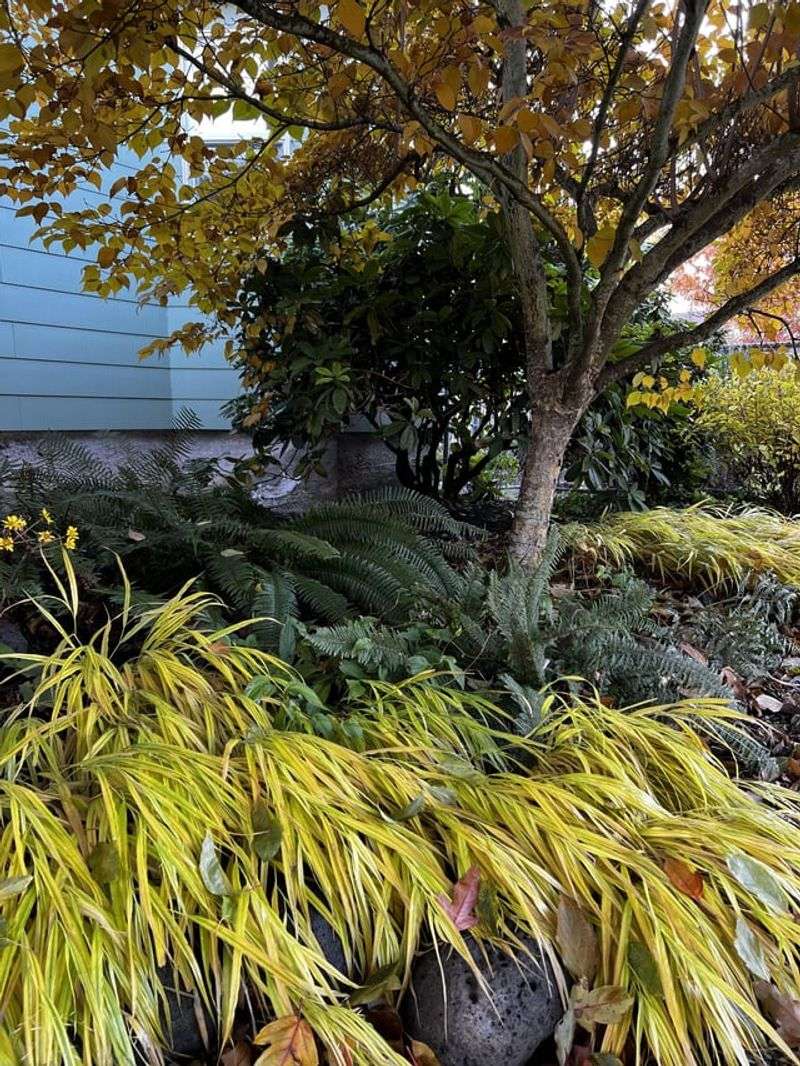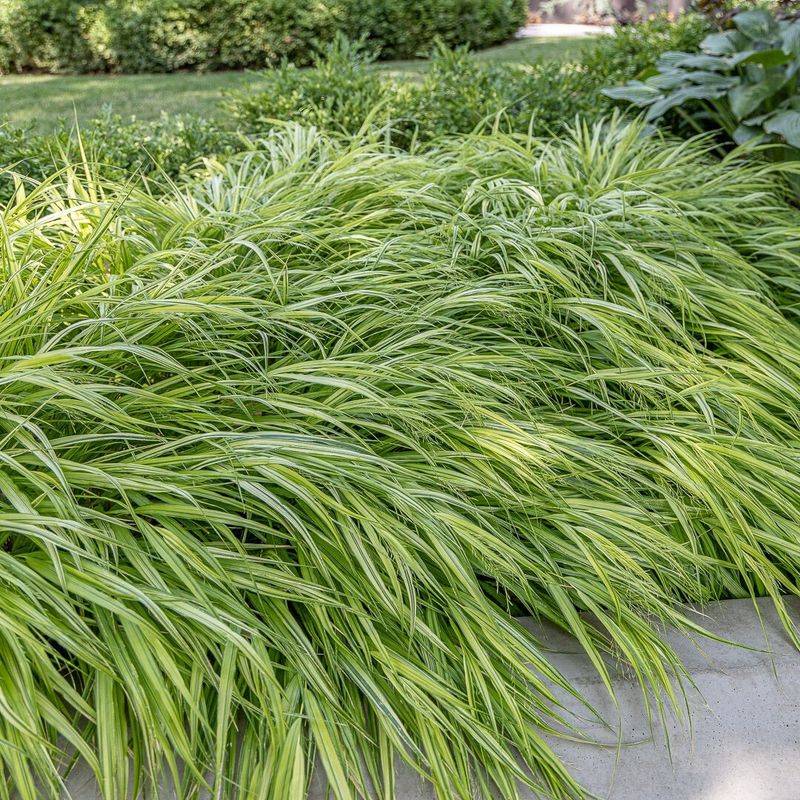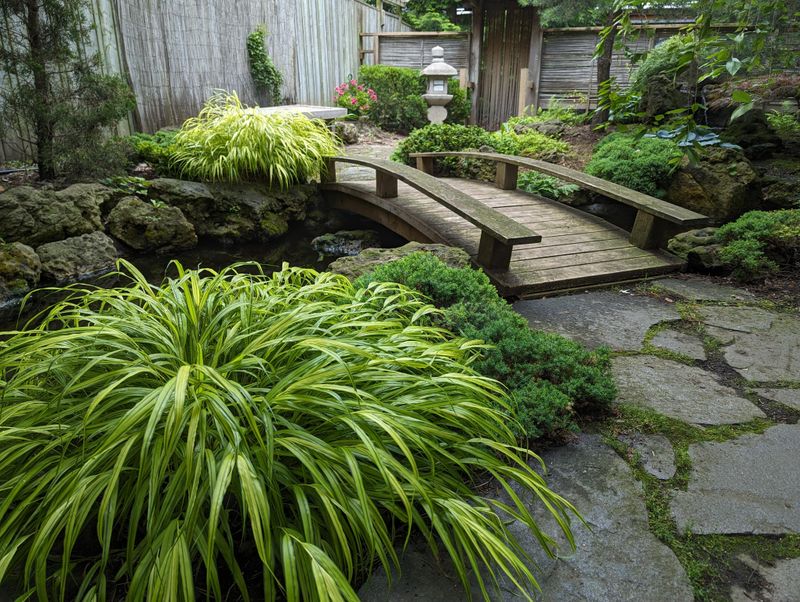Japanese Forest Grass (Hakonechloa macra) is a stunning ornamental grass that brings elegance to shady garden spots where most plants struggle. With its graceful, arching form and vibrant varieties, this low-maintenance perennial creates a waterfall effect in borders and containers.
Gardeners love this versatile problem-solver for its ability to brighten difficult spots while deterring erosion on slopes.
1. Choose The Right Location
Japanese Forest Grass naturally grows in woodland settings, so it prefers partial to full shade in your garden. Morning sun with afternoon shade creates ideal growing conditions.
The perfect spot protects it from harsh afternoon rays while still providing some filtered light. In northern climates, it can handle more sun if the soil stays consistently moist.
2. Prepare Well-Draining Soil
Rich, loamy soil makes Japanese Forest Grass happiest. Before planting, mix in plenty of compost or well-rotted manure to improve both drainage and nutrient content.
While this grass tolerates a range of soil conditions, it strongly dislikes sitting in waterlogged areas. Adding organic matter helps create the perfect balance of moisture retention and drainage that keeps roots healthy and prevents rot problems.
3. Space Plants Properly
Give each Japanese Forest Grass plant room to show off its cascading form. Space plants about 18-24 inches apart when planting multiple specimens.
The grass spreads slowly, eventually forming clumps 12-18 inches tall and 18-24 inches wide. Proper spacing prevents overcrowding and reduces competition for nutrients and water.
For border plantings, staggered arrangements create a more natural woodland look than straight rows.
4. Water Consistently
Japanese Forest Grass loves consistent moisture, especially during its first growing season. Water deeply once or twice weekly rather than providing frequent shallow sprinklings.
Established plants show moderate drought tolerance but perform best with regular watering during dry spells. A moisture meter can help you monitor soil conditions and prevent both over and under-watering.
Morning watering allows foliage to dry before evening, reducing disease risks.
5. Apply Mulch Generously
Spread a 2-3 inch layer of organic mulch around your Japanese Forest Grass plants. Shredded leaves, pine straw, or fine bark mulch work beautifully while mimicking the plant’s natural woodland habitat.
Mulch serves multiple purposes: it retains soil moisture, suppresses weeds, and adds organic matter as it breaks down. Keep mulch slightly away from the crown of the plant to prevent rot issues.
6. Fertilize Sparingly
Japanese Forest Grass doesn’t need heavy feeding. Apply a balanced, slow-release fertilizer once in early spring as new growth emerges.
Too much fertilizer produces floppy growth that loses the grass’s naturally elegant form. For organic gardeners, a light top-dressing of compost in spring provides all the nutrients needed.
Avoid high-nitrogen fertilizers that stimulate excessive foliage at the expense of the plant’s overall health.
7. Select Stunning Varieties
Beyond the green species, colorful cultivars add drama to shady spots. ‘Aureola’ features gold-striped leaves that brighten dark corners, while ‘All Gold’ glows with solid golden foliage.
‘Albostriata’ offers green leaves with white stripes, and ‘Beni-kaze’ turns stunning red in fall. Choose varieties based on your garden’s light conditions – golden forms need more light to develop vibrant color.
8. Create Striking Combinations
Japanese Forest Grass pairs magnificently with woodland companions. Plant alongside hostas, ferns, astilbes, or coral bells for textural contrast.
For dramatic color combinations, pair golden varieties with plants featuring purple foliage like heucheras or ajuga. Blue-flowered plants like brunnera or forget-me-nots create a cooling visual effect next to the warm tones of golden hakone grass.
9. Divide Established Plants
Every 3-4 years, rejuvenate your Japanese Forest Grass by dividing in early spring just as new growth appears. Carefully lift the entire clump and separate it into smaller sections using a sharp spade or knife.
Each division should have healthy roots and several growing points. Replant divisions immediately at the same depth as the original plant. Water thoroughly after replanting to help the grass recover from the division process.
10. Provide Winter Protection
In colder regions (USDA zones 5-6), Japanese Forest Grass benefits from winter protection. After the first hard frost, cut back dead foliage to about 2 inches above ground level.
Apply a loose layer of mulch such as straw or shredded leaves over the crown. This insulates the roots without smothering them. Remove this winter mulch gradually in spring as new growth emerges.
11. Manage Pest Problems
Japanese Forest Grass rarely suffers serious pest issues. Occasionally, slugs and snails may damage young growth in very moist conditions.
Combat these pests with beer traps, diatomaceous earth barriers, or commercial slug baits. Check plants regularly during wet periods when slug activity increases. Deer typically ignore this ornamental grass, making it an excellent choice for gardens with wildlife pressure.
12. Prevent Disease Issues
Good air circulation prevents fungal problems in Japanese Forest Grass. Avoid overcrowding plants and remove debris regularly from around the base.
Rust occasionally affects plants in very humid conditions. If you spot orange pustules on leaves, remove affected foliage promptly. Watering at soil level rather than overhead helps keep foliage dry and reduces disease risk.
Fungicides are rarely needed if cultural practices are sound.
13. Solve Drainage Problems
While Japanese Forest Grass likes consistent moisture, it hates soggy feet. For areas with poor drainage, create raised planting beds or mounds.
Another solution involves mixing coarse sand or fine gravel into the soil before planting. For container growing, ensure pots have ample drainage holes and use a quality potting mix designed for perennials.
Adding a layer of gravel at the bottom of containers improves drainage further.
14. Use In Containers Creatively
Japanese Forest Grass makes a stunning container specimen, especially for shady patios or porches. Choose pots at least 12-14 inches in diameter to accommodate the root system.
In containers, this grass pairs beautifully with trailing plants like variegated ivy or creeping Jenny. Use a premium potting mix and ensure reliable moisture, as containers dry out faster than garden soil.
15. Control Erosion On Slopes
The fibrous root system of Japanese Forest Grass makes it excellent for stabilizing soil on shady slopes. Plant in staggered rows across the slope for maximum erosion control.
For steep areas, consider creating small terraces before planting. While establishing, temporary erosion control measures like jute netting help hold soil until the grass develops a strong root system.
16. Prune For Best Appearance
Cut back Japanese Forest Grass completely in late winter or early spring before new growth emerges. Use clean, sharp shears to trim old foliage to about 1-2 inches above ground level.
This annual haircut removes tattered winter foliage and makes way for fresh growth. Unlike some ornamental grasses, Japanese Forest Grass doesn’t look attractive in winter, so cutting back improves the garden’s appearance.
17. Address Browning Foliage
Leaf tips sometimes brown from inconsistent watering or excessive sun exposure. Trim affected tips with sharp scissors if the browning bothers you.
Sudden widespread browning might indicate drought stress or sunburn. Adjust watering schedules or provide additional shade if needed. Moving container plants to more sheltered locations during heat waves helps prevent stress-related foliage damage.
18. Be Patient With Growth
Japanese Forest Grass grows slowly, especially in its first few seasons. Don’t worry if it seems to take time establishing – this is normal for this species.
Plants typically reach full size in 3-4 years. The slow growth rate actually contributes to the plant’s longevity and low-maintenance nature. Young plants benefit from extra attention to watering and protection from competition with faster-growing neighbors.

